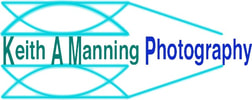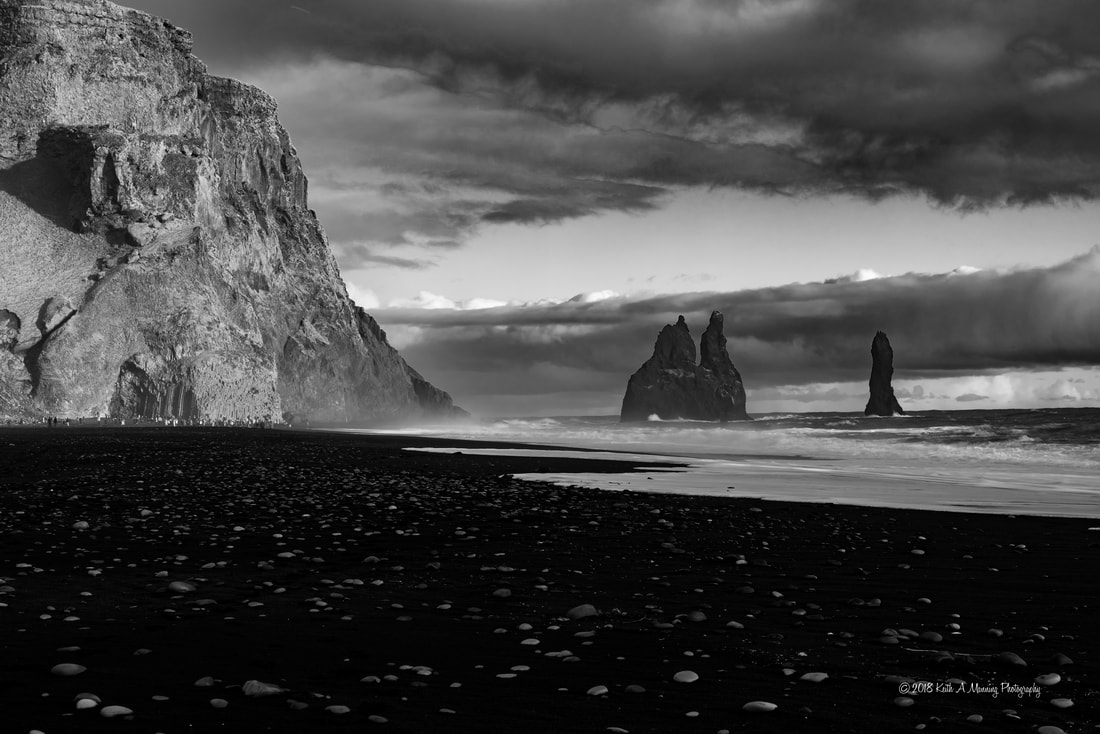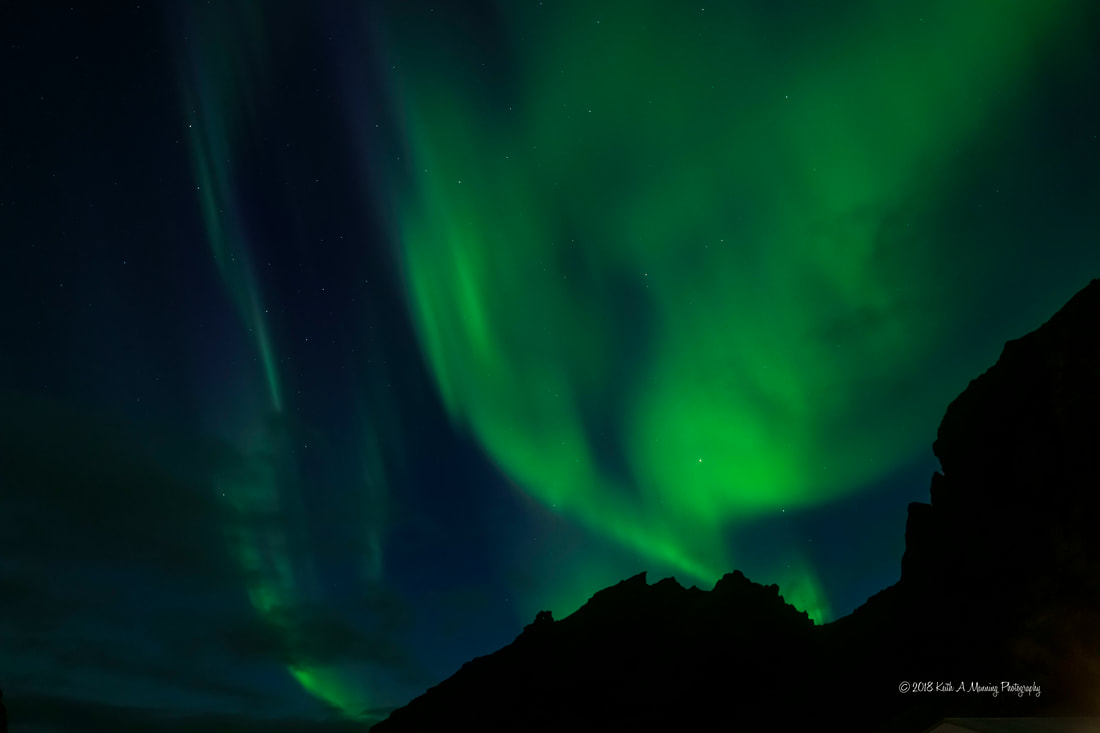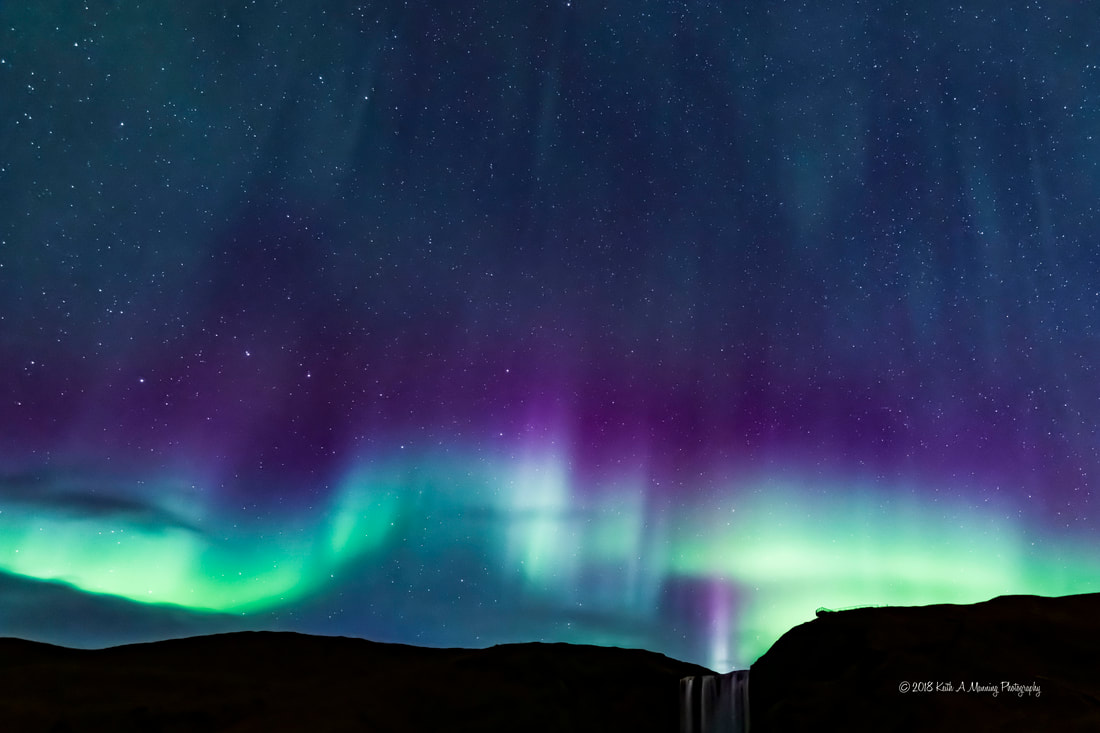|
I recently returned from my trip to Iceland, which was spectacular. I stayed most of my time in South Iceland and one day near Gullfoss. I was in this area once before, but it was part of an 11-day trip around Iceland. The visits to Vik and Gullfoss were too short. It was pouring rain in both places the entire visit, which meant there was not enough time to wait out the weather. In Iceland, one needs time to be able to wait for the inevitable weather change. As a sidebar, the 11-day trip around Iceland was wonderful for seeing the highlights of each area—an introduction to Iceland. A large chunk of every day is driving, though. It is very difficult to really enjoy any one area, especially if it happens to intersect pouring rain for the day. For this trip I wanted to spend some quality time at the black beaches at and near Vik, Seljalandsfoss, Skógafoss, and Fjadrárgljúfur (canyon, about 2 million years old). Since I didn’t have to worry about leaving for another town every morning, I could relax, take my time and photograph a scene and explore the area, as well. I was able to find a couple, off the beaten path spots. Of course, for any trip to Iceland, one has to have very good rain gear for yourself and your camera equipment. Having the right gear enables you to focus on the scenery and not worry about being cold or wet. Having two camera bodies is also very useful; you don’t have to change your lenses in wet weather. The new camera rain jacket I used worked well for changing settings. While South Iceland is quite beautiful it is also very popular for tourists; so part of the time is devoted to finding spots to shoot away from the throngs of tourists. For the photo below I walked over a mile to distance myself from the people admiring the beautiful basalt rock formations. The contrast between the beach, the rocks on the beach, the foam from the waves, the clouds, the sky and rock formations make this an exciting scene to shoot. You have to be careful of sleeper waves, as well, that can knock you down and sweep you into the sea. In addition to the beautiful landscapes and scenery I was hoping to see the Aurora Borealis, since it was October. During my trip in 2016, one of our travel guides recommended October as the best month for the Northern Lights. There is usually not a lot of snow and there is plenty of darkness. As I documented in my previous post, before I left I studied about the Aurora Borealis and how to hunt for them. The forecasted KP index during my stay was, luckily, very high. The first night was supposed to be a 6 (out of nine), which is very high…but the forecast (at 6pm) was for rain and 100% cloud cover all night. It was a good opportunity to catch up on sleep. A sidebar on weather forecasts for Iceland: DO NOT COUNT ON ANY WEATHER FORECAST MORE THAN 24-36 HOURS IN ADVANCE. The weather forecasted for my trip was 99% rain every day with possible clearing at night ONE night. As you will see in this and future blogs on my trip, while it did rain every day, many hours included gorgeous partly-sunny skies, stormy skies, fast-moving clouds all wonderful material for a photographer/artist. Back to Northern Lights hunting. The rest of the time I was in Iceland the KP index was either a 5 or a 4, great solar high solar activity if you are in Iceland. Of course, you can have very high KP index, but if the sky is not clear you will not see the northern lights. I used two very good aurora apps on my iPhone: Aurora Pro and Aurora Alerts. I also used a very good weather radar app—critical for determining where the skies are clear—Weather Pro. Also, I used the Iceland weather web site: www.en.vedur.is. Both aurora apps also include cloud-cover maps. In all of the articles I read to prepare for the Northern Lights, they said the best time to see the Northern Lights was between 10pm and 2am. But, as we all know, rules are made to be broken sometimes. After being totally washed out on my first day, my second day was perfect. I began photographing at sunrise (a reasonable 7:45) and the weather for the rest of the day was beautiful. I returned to my hotel for a late dinner and retrieve my winter boots so I could be comfortable watching for the northern lights in the cold. However, as I walked to the hotel’s dining room to eat a late dinner at 8pm there they were! Fortunately, I had all my gear packed in my car and both of my cameras ready for the northern lights. One camera had a 16-35mm f/4 lens and the other had a 20mm f/1.8 lens. The former aperture was set to f/4 the latter’s at f/2.8. Both had a shutter speed of 4 seconds and the ISO was set higher for the f/4 at 2500. I ran back to my car and drove to the closest spot near the hotel with a decent foreground and began to shoot with the fear I would miss them. I was lucky. I read that the aurora may appear grayish to my eye. These were bright green, alive and vibrating. The collisions between the electrons of the solar particles and oxygen atoms and molecules was intense. They then began to dissipate or fade…only to come back into another shape. Once they fizzled out where I was—again this was just after 8pm, not 10pm, I just drove to my planned spot—Skógafoss, only a five minute drive from my hotel. I had no dinner that night; just trail mix and fruit. As I got out of my car in the parking lot they returned with a vengeance I plopped my tripod down and aimed a little too high—I didn’t want to miss any of the sky. I almost missed the waterfall. My eye could not see the purple (from the nitrogen atoms and molecules), but the yellow-green was intense and vibrating. The colors, high in the sky simply looked grey, but they were moving. The combination of the bright stars and the electric light show was incredible. If I didn’t see them the rest of my trip I would have been content! However, three of the six nights I was fortunate to see and photograph them. More to come.
0 Comments
|
Keith A ManningPhotographer specializing in Cityscapes, Landscapes, Portraits and Fine Art. Archives
April 2019
Categories |
|
|
Photography by Keith A Manning




 RSS Feed
RSS Feed